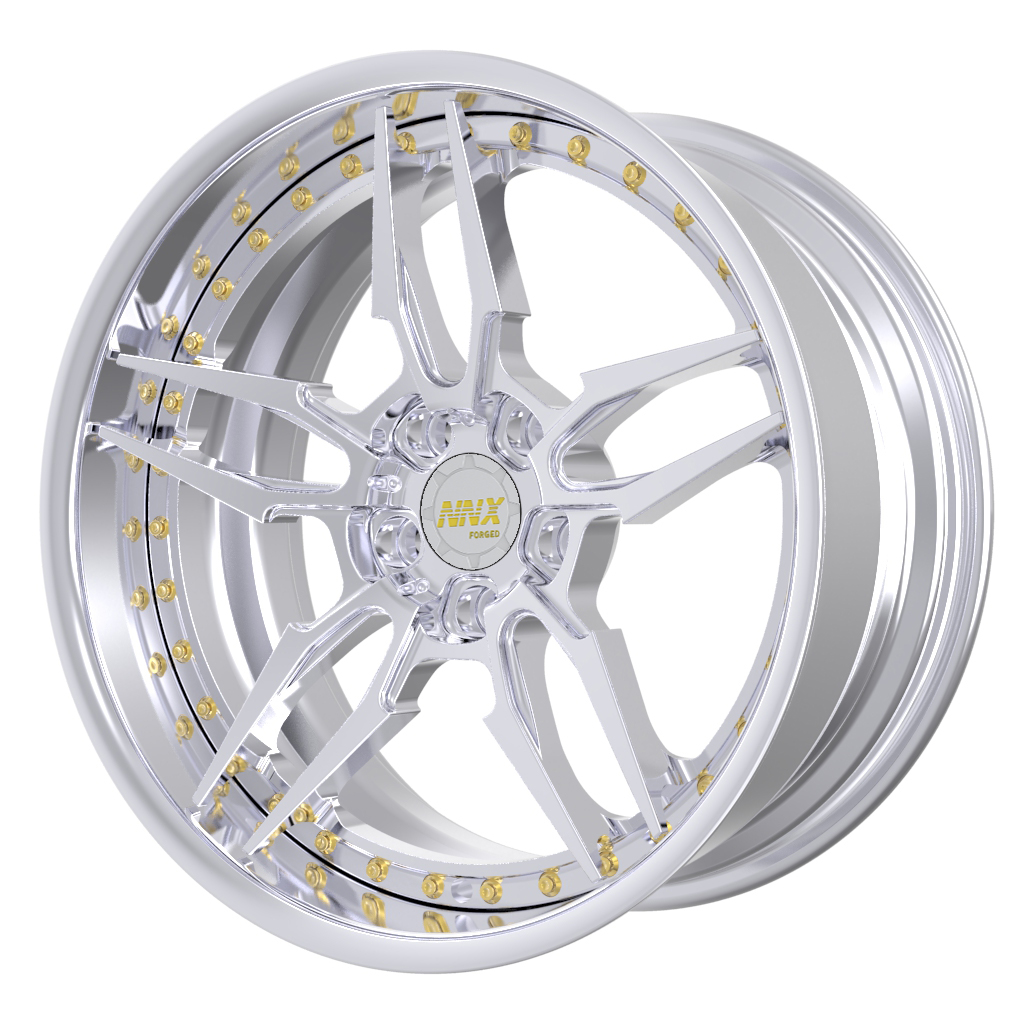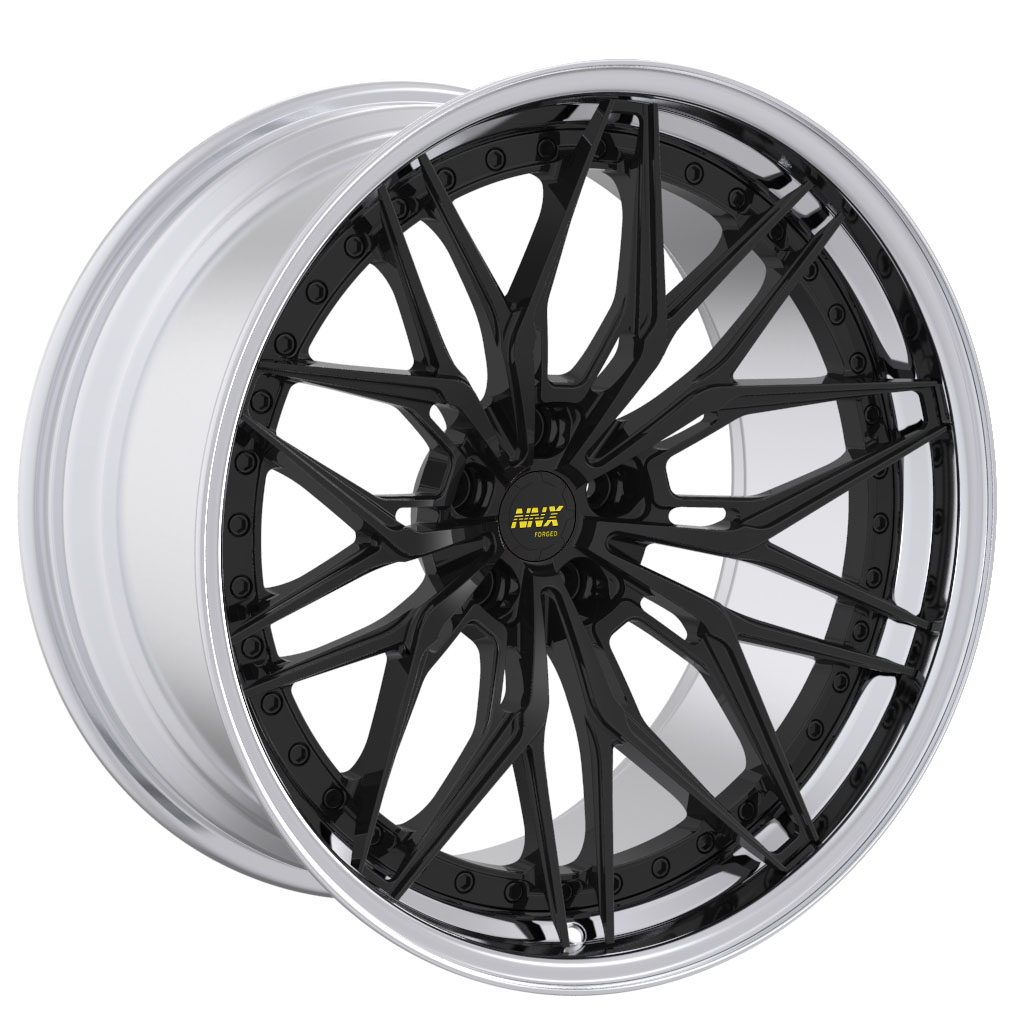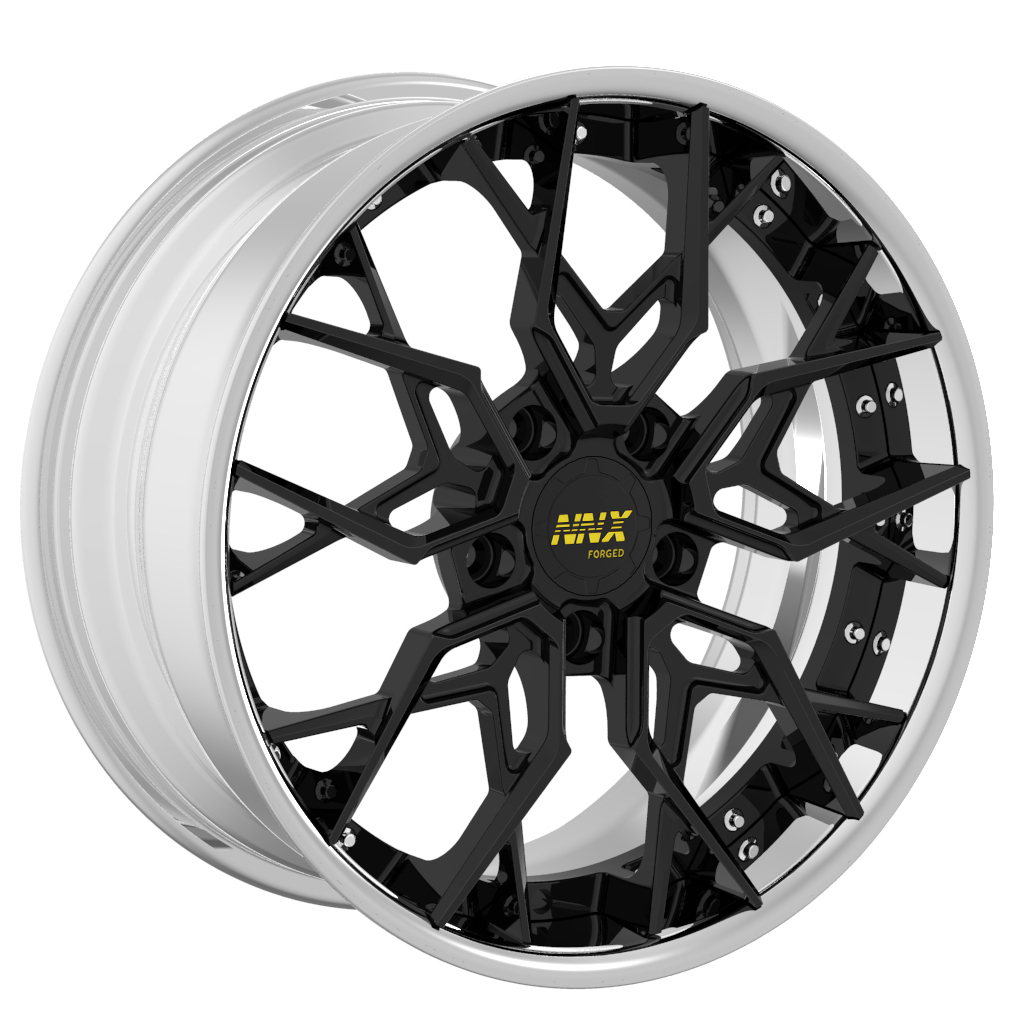NNX-S196 219X9 19X12 ET 45 53 P.C.D 5X130 center hole 71.6 2piece forged wheel (custom 18-24inch any date)
Aluminum alloy
In 1923, the car began to use the sand casting process aluminum alloy wheels. After World War II, aluminum alloy wheels were used for ordinary cars. In 1958, there was a cast aluminum alloy wheel, and the forged aluminum alloy wheels were forged shortly after. In 1979, the United States adopted an aluminum band -mounted wheel as a standard wheel. In 1980, the Federal German Mercedes -Benz started batches of 240D cars with aluminum alloy wheels. Japan is the country with the most aluminum aluminum wheels in the world. In 1973, the production of aluminum alloy wheels was produced in batches; in 1977, the production of trucks and passenger aluminum alloy wheels was produced in batches; In the past 10 years, the average annual growth rate of global aluminum alloy car hubs has reached 71.6%. Several major car production countries in the world today have aluminum alloy wheels.
The wheels are the standard configuration of the vehicle.
China’s aluminum alloy wheel manufacturing began in the late 1980s. In the mid -1990s, the investment climax of the construction of a car aluminum wheel factory appeared. From 998 to 2001, the production capacity of domestic automotive aluminum wheels was much larger than the demand for the domestic automotive industry, and it entered a stage of slow development. Since 2002, China’s automobile manufacturing industry has developed rapidly. A new round of investment in the car aluminum wheel industry.
Compared with steel wheels, aluminum alloy car wheels have the following advantages: ① Light weight, which can be reduced by 30%-40%compared with steel wheels. Usually 1K0 aluminum alloy, car weight loss 2.25kg. At present, each car in the United States uses at least 100kg aluminum alloy, which can lose 225kg. If a car is used for 10 years and drove 400km, it can save 6.3T gasoline, which is considerable. The weight loss effect of aluminum alloy car hubs is obvious, as shown in Table 1: 2) good shock absorption performance, strong absorption energy, and improving the driving performance and safety of the vehicle; It can reduce the working temperature of the tire and extend its life; ④ Beautiful appearance, the structure of aluminum alloy wheels produced by different processes can be diversified, and can well meet the aesthetic requirements of various users.
With the increasing popularity of ABS installation on cars, in order to reduce the quality of non -suspension components and the load of braking systems, the use of aluminum alloy wheels is becoming more and more common. According to statistics, the use rate of aluminum alloy wheels on light vehicles has reached about 0.50%, and more than 60%of some countries have been. Car aluminum alloy wheels can be roughly divided into two types: overall and combined. The integrated type can be produced by casting or forging, and the applicable aluminum alloys include A356.2, AC4C, H5052, etc. The wheels of the combined (shelter or three -type) wheels are formed by multi -mountain plates, and the spokes are formed by plate or forging. The applicable aluminum alloy is 5054-0, 5052-0 and 6063-0. Car aluminum alloy wheels have obvious weight effects. Light-type aluminum alloy wheels are 30%-40%lighter than traditional steel wheels, and medium-sized aluminum alloy wheels are about 30%light. The overall board (6061 alloy) wheels manufactured by CENTREIN TOURRE Company of the United States is 50%lighter than the stamping wheels of the steel plate, and the rotating workshop is less than 90s/wheel. It does not need to be assembled and is suitable for mass production. In addition, the pressure resistance of the aluminum alloy wheels of the same outer diameter is improved.



















